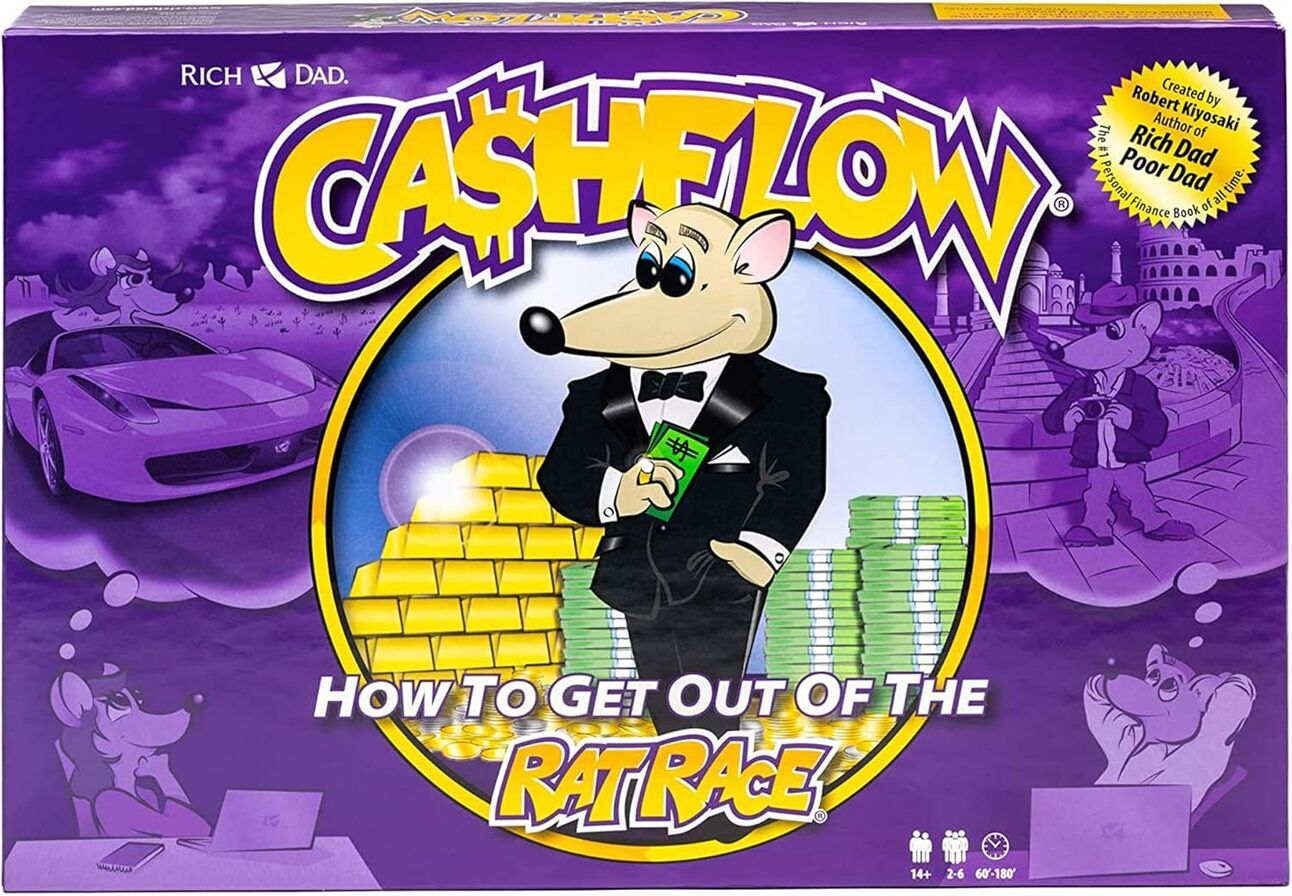- The Wealth Expedition
- Posts
- The Call To Adventure
The Call To Adventure
In stories that touch the human soul, the protagonist is called to adventure. But that involves stepping into the unknown. Are we willing to take that journey for ourselves?

Our weekly newsletter features the following sections:
First time reading? Subscribe for weekly content here.
“This first stage of the mythological journey—which we have designated the ‘call to adventure’—signifies that destiny has summoned the hero and transferred his spiritual center of gravity from within the pale of his society to a zone unknown. This fateful region [is one] of both treasure and danger.
The hero can go forth of his own volition…
Or he may be carried or sent…
The adventure may begin as a mere blunder…
Or when some passing phenomenon catches the wandering eye and lures one away from the frequented paths of man.”
-The Hero With A Thousand Faces by Joseph Campbell

NEWS
What Happened Last Week
The Conference Board Leading Economic Index showed a negative signal for the economy’s future health in September.
US GDP grew at an annualized 2.8% in Q3, which was below the estimates of 3%.
Excluding government spending, trade and inventories, domestic demand actually rose an annual 3.2% in Q3 versus 2.7% in Q2.
Consumer spending grew at the fastest pace since Q1 of 2023.
Gold hit a record high and has become a popular trend.
The US economy added 12,000 jobs in October, far below the estimated 113,000 due in part to the storms and strikes.
Investors are feeling less optimistic and even bordering on fear according to the AAII Investor Sentiment Survey and Fear and Greed Index.
How I See It
A negative signal was given as of September’s data of leading economic indicators (LEI).
This is not a perfect predictor, but here’s what we can learn from it:
Material goods have suffered regular decline in activity over the past year, but their decline has accelerated in the past six months.
The US economy is made up of demand for both goods (~20%) and services (~80%).
This LEI reading skews its weighting towards a focus on goods which is not perfectly reflective of its importance to the whole US economy.
Alongside this news, US GDP also showed a weaker Q3 reading overall than expected.
That has dampened investors’ feelings about where the markets are heading.
And that fear, accompanied by a dip in the DOW and S&P 500 indices, has led investors to buy gold and push the price further to a temporary record high.
But what we’re looking for is either 1) deteriorating economic factors that are being widely ignored in combination with 2) investor sentiment that is in the extreme greed mode.
We’re not in extreme greed right now. There’s still plenty of fear and uncertainty, which is indicated by gold’s spike of more than 32% so far this year.
We’re not trying to jump out of markets when they drop for just a few days, weeks or even months. That’s a losing game. But identifying a bear market, which can last much longer, is a way to add long-term value if proper action is taken.
Here’s some encouragement: this is normal for markets to be choppy leading up to an election.
In all but three presidential election years going back to 1945, markets have been net positive by the end of the year following the election day.
Markets dislike uncertainty. They like certainty.
Electing our next President will do away with much of the current uncertainty about how companies and individuals plan for the years ahead.

PARADIGM SHIFT
The Call To Adventure
In his book The Hero With A Thousand Faces, author Joseph Campbell outlines the common elements that make up the story of a hero’s journey.
It’s called a metanarrative.
It’s the theme which is common to virtually all stories throughout history which have deeply touched the human soul.
The start of that journey is the call to adventure.
Sometimes this comes in the form of the character yearning for something beyond their normal, everyday life. Think of Belle in Beauty and the Beast.
Other times, the character is perfectly happy with their normal life but is forced by circumstances into an adventure against their will. Think of Frodo from The Lord of the Rings.
That adventure transforms the hero’s life, but not without walking the road of trials, meeting with temptation, and spending time in the belly of the whale.
We like to watch movies and read stories of such adventure. We like it usually because we expect the hero to somehow be transformed. Regardless of whether the story has a happy or sad ending, we come away feeling inspired by the fact that such a common individual transformed into a hero. Their actions remind us of something divine, something absolutely right and good.
We recognize something in this which reflects our own inner journey.
When it comes to our own lives, are we feeling that call to adventure? Most likely. Otherwise, we wouldn’t relate with such stories. But here’s the important question.
Are we willing to do what it takes to answer that call and allow the journey to transform us, come what may?
There are far more important things than material success. The sooner we accept that, the sooner we will begin to meet with success beyond our capacity to imagine.
The willingness to pursue that personal transformation through answering that inner call is the first step of the journey. And the perseverance to not look back, regardless of the desert which must first be crossed, will eventually earn you a place in the promised land.


FINANCIAL TOOL
Net Present Value
When considering different paths you could take for that next step of adventure, you may find it useful to think about your actions in terms of Net Present Value.
This number helps you determine whether an action is likely to improve your financial situation.
An example may be more helpful than the definition.
Imagine this:
You have $100,000 and are considering how to invest.
You believe you could invest it passively in the stock market and average an estimated 8% over the next ten years.
But you also have the opportunity to buy a small business that makes an estimated profit of $30,000 per year.
If you don’t have time to run a small business, then the answer seems clear: the passive stock market is the better choice in terms of time required from you.
But if you do have capacity to run a small business, then here’s another way to look at this opportunity.
Let’s say you also estimate that once you acquire the business, you believe you can run the business for the next ten years. To keep things simple, perhaps you believe you can increase profits 50% after the first two years and then hold steady for the next eight. Then you plan to sell the business for the same multiple that you bought it for.
Is this a good deal for you?
That’s where Net Present Value comes in. And you’ll need a financial calculator to find it. If you don’t have one, you can use a free app such as BA Financial Calculator on Google Play or BA Financial Calculator for iPhone.
Once the calculator is on, follow these steps:
Press CF to display CF0 (which means the first cash flow out)
Type -100,000 and click Enter (make sure to include the negative sign)
Press the down arrow (you should then see C01 which means cash flow 1)
Type 30,000 and press Enter and down arrow (you should then see F01 which means frequency 1)
Type 2 and press Enter and down arrow (this means you expect $30k profit for the first 2 years)
For C02, type 45,000 and press Enter and down arrow (you’ve improved the profit)
For F02, type 8 and press Enter and down arrow (assuming you make this for the following 8 years)
For C03, type 150,000 and press Enter and down arrow (you sell the business in year 11 for this final inflow of cash)
For F03, type 1 and press Enter
Press NPV (right next to the CF button)
Type 8 and press Enter (this is the 8% which you believe you could make on the stock market as an alternative with this money)
Press the down arrow.
Press CPT (stands for “compute” in the upper left-hand corner)
This will calculate the Net Present Value as $239,537.
What does this number mean? It means that buying the business, under these assumptions, is offering you the same value as having an additional $239,537 in your pocket today.
Actually, any positive number for NPV means that it’s a valuable action to take.
When making a big decision, you may also want to run a scenario that you think would be close to worst case. This can also be helpful to determine the risk you’re taking and whether you still think it’s worthwhile.

HERE’S HOW I CAN HELP
FUTURE RESOURCES ARE IN THE WORKS!
You will have access to in-depth digital courses in the very near future.
The first major course will reveal how to create a massive surplus monthly cash flow that perpetually increases through a combination of budgeting, increasing earning potential and investing.
We will be focused on comprehensive wealth which values not only money but also time and freedom.
Until then, here’s a fun game which I often think back to in my personal wealth expedition. In a similar way as Monopoly, it is an excellent tool to get into the mindset of investing.
All players start out with an earned income and set amount of expenses. Over time, they buy stocks, real estate and even the occasional small business which eventually frees them from their day job. This moves them out of the rat race onto the fast track. The first player to achieve their original goal on the fast track wins the game.
If you master Cash Flow 101, you can also buy the next level up called Cash Flow 202. Cash Flow 202 involves more complex investments. And both are also available as computer games.
Cash Flow: The Board Game by Robert Kiyosaki
This post contains affiliate links, which means I may earn a commission if you make a purchase through these links at no additional cost to you. Thank you for your support!

I’d love to hear from you. Let me know what you’d like to see in upcoming newsletters, articles, or a digital course at Contact Us - The Wealth Expedition.

